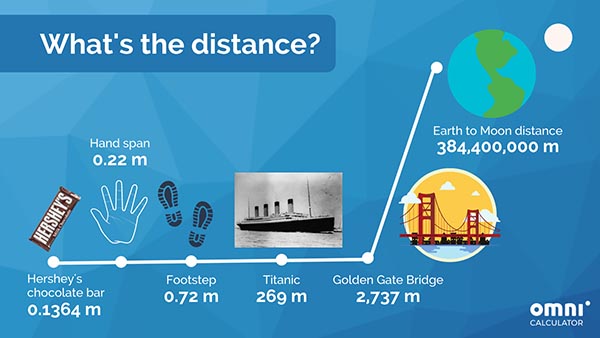Your Friday Flipbook Animations Made from Tattoos
Eye, Robot
You may have seen the news this week that Amazon has unveiled Astro. No, not the Jetsons’ dog, but a household robot—sort of a mobile Alexa.
The company said it can be remote-controlled when not at home, to check on pets, people, or home security. It can also patrol a home automatically and send owners a notification if it detects something unusual. Amazon said it was more than “Alexa with wheels” and had been programmed with a range of movements and expressions to give it personality. It demonstrated asking Astro to “beatbox” - and the robot bopped its head and made expressions while playing hip-hop beats.
That last bit alone sounds terrifying. Other coverage of Astro has tended to called it “cute.” Is it? Is it really?

No, we didn’t think so.
Gizmodo’s Andrew Couts thinks “terrifying” is a better adjective than “cute” when describing Astro, and it’s hard to disagree.
Mere hours after Amazon’s event, my privacy concerns were seemingly vindicated. Motherboard published leaked documents revealing the obvious: that Astro, which will cost $1,500 after an introductory price of $1,000 for Amazon-selected early adopters, is “first and foremost … a surveillance device that tracks you and everyone who enters your home.” That’s what Amazon means when it advertises Astro as a “household robot for home monitoring, with Alexa,” that gives you “peace of mind,” whether you’re keeping tabs remotely on a home-bound loved one or just want to check if you turned off the stove. At least, that’s what it promises—one day, perhaps. As a developer who had the chance to toy around with the robot pre-release told Motherboard, “Astro is terrible and will almost certainly throw itself down a flight of stairs if presented the opportunity.”
Amazon says that Astro is “designed to protect your privacy” because you can easily “turn off mics, cameras, and motion with one press of a button and use the Astro app to set out of bounds zones to let Astro know where it’s not allowed to go.” However…
This assurance ignores the history of Alexa-enabled devices invading our privacy, of the company’s Ring cameras (which are built into Astro) creating a private surveillance network used to spy on our neighbors and send information to the police. It fails to address the possibility that these devices could be hacked. And it glosses over the glaring reality that Amazon is actively building a ubiquitous surveillance system that it alone controls inside our most private spaces—as the Verge reports, establishing its dominance over a future of “ambient computing” is Amazon’s explicit goal. And it’s doing that by flooding the zone with “cute” internet-connected devices.
It’s guaranteed that pets would be fairly freaked out—although it might be satisfying to see a particularly aggrieved German shepherd have at it.
Here in the Around the Web Cultural Accretion Bunker, there is nothing “smart” (including the editor) and the thought of an all-seeing, all-hearing mobile robot prowling around makes us rather nervous.
Amazon Astro Leaks Data All Over New Carpet https://t.co/f6scZdYqIC pic.twitter.com/5YF1ZL0wGN
— The Onion (@TheOnion) September 30, 2021
Nevermore!
Now this is more like it! From Business Insider:
A drone delivery service in Canberra, Australia, has had to contend with its devices getting attacked by ravens guarding their nests. Wing, a subsidiary of Google parent company Alphabet, has been delivering everything from coffee, medicine, and office supplies to Canberra residents since 2019. But on Tuesday it announced it would suspend deliveries to part of the city after several reports of ravens swooping down on its drones, The Canberra Times reported.
Cheers
Dear Evan Hansen? I'll stick with Year Seven Danson. pic.twitter.com/1GXaMLmSI9
— James Urbaniak (@JamesUrbaniak) September 26, 2021
Watt the Heck?
We are starting work on our 2022 Printing Outlook report, and we found something we may use to jazz it up a bit. Omni Calculator is a Polish startup that makes calculators—not desktop or pocket varieties, but customized (or “bespoke,” to use the latest lingo) calculators for specific purposes, such as how much fertilizer you would need based on the size of your lawn, how many leaves are on a tree based on size and species, or even what your carbon footprint from an airplane flight would be.
So, via Boing Boing, to celebrate its 2,000th calculator, Omni Calculator has developed a “Weird Units Converter” that converts measurements into wacky units, allowing you to calculate:
- How many llama’s spits does it take to get to New York?
- What is your weight in bees?
- What is a given travel time in Lord of the Rings trilogy watch time?

So, for example, July printing shipments came in at 1,112,068,966 pints of beer. Doesn’t seem quite so dire when expressed that way, does it?
TMI
To the man in front of me at the grocery store: I have no problem with you politely refusing your receipt from the cashier, but must limit you to providing a maximum of zero (0) reasons why.
— Jeremy Woodcock (@jwPencilAndPad) September 27, 2021
Insecurity
Was it a good week for graphene news? It’s always a good week for graphene news! Well, sort of. Whilst The Guardian hailed graphene as a “wonder material,” they report that our favorite substance has become a national security concern.
A large shed on an unassuming industrial estate beside Swansea’s River Tawe does not at first glance seem vital to the UK’s national security. The facility, run by a small company called Perpetuus , sits beside a mortuary and a parcel depot.
Earlier this month, the company, which makes graphene – a “wonder material” made of a single layer of carbon atoms – grabbed the attention of the government, which said it would investigate a possible takeover involving a Chinese academic, in a highly unusual move that startled industry observers.
The controversy has shone a spotlight on the global race to develop graphene, suggesting that it may be about to make the long-promised leap from the lab to everyday products, and possibly to military uses as well. In particular, it has drawn attention to China’s attempt to corner the nascent industry, and the Communist state’s reach into British universities developing the technology.
Sigh. We can’t have nice things.
Unreliable Sources
I wanted to understand the infield fly rule, so I rang up Tilda Swinton pic.twitter.com/cjdHjjt0Nj
— David Burge (@iowahawkblog) September 23, 2021
Underwater Internet
We speak of documents and applications being “in the cloud” but “the cloud,” as it turns out, is largely underwater, in the form of hundreds of fiber optic cables under the sea. Says Vice:
The cables lie on the ocean floor and are believed to span more than 807,000 miles. Some are very short, linking islands across a few miles like the one that runs between Ireland and the United Kingdom. Others, like one of the cables connecting Asia to the United States, are more than 10,000 miles long.
Now, coder Tyler Morgan-Wall created a 3D visualization of all these cables using data from Submarine Cable Map, a website run by TeleGeography, a geographic data intel company.

By the way, Vice helpfully adds, “Contrary to popular myth, sharks are not prone to chewing on the cables.”
All Maps Amazing and Terrible
World Mercator map projection with true country size and shape added pic.twitter.com/4HvBdcEUGa
— Amazing Maps™ (@amazingmap) September 27, 2021
Population per capita
— Terrible Maps (@TerribleMaps) September 27, 2021
By @JakubMarian pic.twitter.com/R1AVQ5e8wQ
I, Vandal
Well, it looks like even vandals graffiti artists are not safe from robot competition. Via Laughing Squid, German “robotic artist” Niklas Roy has developed the Graffomat, an automated spray can plotter robot that applies graffiti onto a wall.
Interestingly, the Graffomat can be used in real-time over the internet, presumably so that only the robot will be arrested and not the humans controlling it. Pretty sneaky.
T. Rowe Dent
Sometimes it seems like the entire world has evolved into some sort of surreal parody of itself. What else to make of this lede from a Gizmodo story: “Meet the social media sensation that is taking the world of crypto trading by storm: his name is Mr. Goxx’ and he is a hamster from Germany. You can stream his trades on Twitch.” (Well, where else would you find a hamster than on Twitch?)
The rodent was named after Mt. Gox, a Bitcoin exchange that shut down in 2014 after a reported $460 million of holdings disappeared. And Mr. Goxx is, apparently, “World’s first crypto asset trading hamster.” How does that work, exactly?
According to a video on his YouTube account [A hamster with a YouTube account has to be one of the signs of the Apocalypse. —Ed.], the whole thing works like this: Goxx occasionally enters his “office” (also known as the “Goxx box”), which is replete with a hamster wheel (dubbed the “intention wheel”) and two separate tunnels, respectively labeled “buy” and “sell.” Running on the wheel initiates a transaction: an automated, rotating Rolodex of 30 different cryptocurrencies is tied to the wheel’s motion (Bitcoin, Ethereum, and other prominent coins are included). After Goxx exits the wheel, whatever tunnel he runs through subsequently initiates a “buy” or “sell” position on that particular token.
Does it work?
reports show that Goxx has been outperforming Warren Buffet, the NASDAQ 100, and the S&P 500—with his portfolio up about 20 percent since he first started trading in June. Granted, he’s been moving a much smaller amount of capital around (his account holdings have reportedly grown from the Euro equivalent of $381 to $498)
Of course, the folks behind the Goxx account do point out that this is for entertainment only and that you shouldn’t get financial advice from a hamster, although, to be honest, we’ve had worse.
Tead Off
Going over 70 Chamomiles an hour. https://t.co/09058Nuuab
— Differently Dave (@GoldenVision90) September 25, 2021
AI-Yi-Yi Part the Infinity: Book Reports
If you’re a student and you need to quickly summarize a book for a book report or lit class exam, why not check out GPT-3 from OpenAI that uses artificial intelligence to summarize books.
To safely deploy powerful, general-purpose artificial intelligence in the future, we need to ensure that machine learning models act in accordance with human intentions. This challenge has become known as the alignment problem.
A scalable solution to the alignment problem needs to work on tasks where model outputs are difficult or time-consuming for humans to evaluate. To test scalable alignment techniques, we trained a model to summarize entire books, as shown in the following samples.[1] Our model works by first summarizing small sections of a book, then summarizing those summaries into a higher-level summary, and so on.
Take, for example, this summary of a portion of Alice’s Adventures in Wonderland:
Alice falls down a deep well and lands in a heap of sticks and leaves. She follows the White Rabbit down a long passage, but loses sight of it. She finds a bottle that says “Drink Me” on it and drinks it, shrinking to 10 inches tall. She grows to 9 feet tall and then shrinks again. She cries and grows larger again. A mouse appears and Alice asks it for help. The mouse agrees to tell Alice its story if she’ll take it to the shore. Once there, the animals discuss how to get dry again. The Dodo suggests a Caucus-race to get dry. Everyone crowds around Alice asking for prizes. Alice pulls out a box of comfits and hands them out as prizes. The Mouse then asks Alice if she has a prize for herself, and she says she only has a thimble. The Dodo takes the thimble and presents it to Alice, saying they all beg her acceptance
It will be interesting to see if it could someday participate in the Summarize Proust Competition.
Nice Try, Though
Sign in the window of one of our local bookshops! pic.twitter.com/7gNGfehKro
— Stephen Old #HerewardTheWoke#BarnHelm#SAFC#EFBPE (@StephenOld) September 25, 2021
The Agony Booth
As people start to return to office life post-pandemic (should there ever be a post-pandemic period), it has been suggested that Zoom meeting will still be a thing (although many people seem to have forgotten that Zoom meetings were a thing even pre-pandemic). So one designer of office systems is betting that offices will need to be outfitted with special “Zoom booths.” Says Core77:
"We all have a new emerging challenge as we gradually return to our workplaces," says Nic Baxter, Managing Director at Spacestor. "It's no longer video conferences where everyone's at home but a blended or hybrid situation where some are now back in the office. Electronic noise and half-conversations are very distracting for nearby colleagues and of course some meetings need to be completely private, too. Residence Connect meets all these needs, comfortably."

Essentially, they’re reinvented the phone booth.
The company makes much of the fact that the Residence Connect unit is designed for good UX (adjustable lighting, ventilation and height of working position) and maintenance, with removable panels to access various components; but curiously, they make no mention of air filtration, an issue I’d imagine would be top-of-the-list.
Ah, but how soon before we see Zoom booths outside on the street, for those who are out and about and are suddenly called into a meeting (you laugh…)? And then, in the next reboot of Superman, Clark Kent suddenly has a convenient place to change. Everything old is new again.
Egged On
The people have had un oeuf https://t.co/O19uH1Lw9z
— Eric Haywood (@EricHaywood) September 28, 2021
Mr. Green Jeans
We have written here and elsewhere—notably on the Textiles & Apparel site—that manufacturing clothes has a highly negative environmental impact. However, just owning clothes also has an environmental impact—although, to be honest, we’re not sure that the alternative is such a good idea… Anyway, via Core77, it’s often repeated washing and drying that cause the bulk of a piece of clothing’s environmental impact. This is especially the case with jeans—denim—which, as most of us probably know, take a lot of energy to dry. So what to do?
Mark Little, Patagonia's Product Line Director for Men's Sportswear & Surf Apparel, wore the same pair of jeans almost every day for 2.5 years—and only washed them five times. Little explains why in this article by Clark, which resulted in the tips below:
"Here are five ways Mark helps his jeans last longer, while using less electricity, natural gas and water. You can, too."
- Don't Wash: Air out, spot clean or place in the freezer overnight
Note to self: thaw before wearing. We continue.
- Wash Better: If you must, use cold water and wash by hand rather than machine washing
- Line Dry: If that's not an option, avoid a hot dryer (stick to low heat)
- Repair: Before replacing, customize. Jorts, anyone?
- Pass Along: When done with a pair, let a friend write their next chapter
What friend wouldn’t want your old, tattered, manky jeans? Still, some sage advice.
You mean there are people who CAN fit into the jeans they wore at 21? It will take a great effort of toleration from me not to wish them ill … pic.twitter.com/tQX5udQhSu
— Stephen Fry (@stephenfry) September 28, 2021
All the World’s a Spreadsheet
“Party in a spreadsheet” is not a phrase we hear very often (“funeral in a spreadsheet,” yes, when some bad industry data comes along), but, via The Verge, Future Wife: Party in a Spreadsheet is an “interactive digital play/upstate barn wedding” that is “staged” in Google Sheets.
It’s difficult to describe Party in a Spreadsheet in a way that makes sense. The production was inspired by Marie Foulston’s piece, Party in a Google Doc, but takes a decidedly surrealist approach. There are communist goats, alien activists, several themed islands, and an anonymous audience masquerading as a variety of exotic animals.
… The actual experience of attending starts with receiving a wedding invitation via email (“We gather to celebrate the heterosexual union of Boots and Patsy”) from a member of the New Georges theater company. At the set start time I was encouraged to log out of my Google account or open an incognito window, and join the festivities. Audience members are first dumped into a “welcoming meadow” sheet where they’re greeted and encouraged to wander around and start editing the sheet.
Things get more bizarre from there.

The next line is a classic:
I’m not sure Sheets is the best way to experience theater — Party in a Spreadsheet is referred to as an “adaptation” of tang’s original play in an “extremely loose sense of the word” — but it did produce an experience that lingered with me. Going in, I thought seeing someone “perform” Sheets editing would be the most interesting part of this. I’ve been caught unaware in a Google Doc and pretended to work “intelligently” for an editor. But what surprised me more were the asynchronous interactions.
We’ll go one better. We are going to present a live staging of our Fall 2021 Print Outlook Survey data analysis. Keep an eye out for time and venue.
Epic Theater
I wish Bertolt Brecht could’ve won a Tony so he could’ve given a speech like, “I love theater because it brings people apart and isolates them in a horrible dread”
— Louis Virtel (@louisvirtel) September 26, 2021
Paper Late
Via Laughing Squid, Juho Könkkölä, Finnish origami artist, demonstrates his intricately folded origami knight made from a single sheet of paper with no cuts. It took more than 41 hours to make (the video below is a 21-minute timelapse of the process) and is seven inches tall.
Indeed
STOP MAKING ME WATCH VIDEOS JUST WRITE DOWN HOW TO DO THINGS
— Dr Charlotte Lydia Riley (@lottelydia) September 24, 2021
This Week in Printing, Publishing, and Media History
September 27
1825: The world’s first public railway to use steam locomotives, the Stockton and Darlington Railway, is ceremonially opened.
1840: Iconic cartoonist Thomas Nast born.
1891: Russian author and critic Ivan Goncharov dies (b. 1812).
1962: Rachel Carson’s Silent Spring is published, inspiring an environmental movement and the creation of the U.S. Environmental Protection Agency.
1998: The Google internet search engine retroactively claims this date as its birthday.
September 28
1891: American author and poet Herman Melville dies (b. 1819).
1909: American author and illustrator Al Capp born.
1935: French-Scottish actor, director, and producer, inventor of the Kinetoscope William Kennedy Dickson dies (b. 1860).
1951: CBS makes the first color televisions available for sale to the general public, but the product is discontinued less than a month later.
1952: American satirical novelist Christopher Buckley born.
1964: American comedian, actor, and singer Harpo Marx dies (b. 1888).
1966: French author and poet André Breton dies (b. 1896).
1970: American novelist, poet, essayist, and playwright John Dos Passos dies (b. 1896).
September 29
1547: Spanish novelist, poet, and playwright Miguel de Cervantes born.
1901: Italian-American physicist and academic, Nobel Prize laureate Enrico Fermi born.
1902: French journalist, author, and playwright Émile Zola dies (b. 1840).
1954: The convention establishing CERN (the European Organization for Nuclear Research) is signed.
2012: American publisher Arthur Ochs Sulzberger dies (b. 1926).
September 30
1939: NBC broadcasts the first televised American football game between the Waynesburg Yellow Jackets and the Fordham Rams. Fordham won, 34–7.
1947: The World Series, featuring the New York Yankees and the Brooklyn Dodgers, is televised for the first time. (The Yankees won.)
1980: Ethernet specifications are published by Xerox working with Intel and Digital Equipment Corporation.
October 1
1843: The News of the World tabloid begins publication in London.
1861: Mrs Beeton's Book of Household Management is published, going on to sell 60,000 copies in its first year and remaining in print until the present day.
1957: First appearance of In God We Trust on U.S. paper currency.
October 2
1789: The United States Bill of Rights is sent to the various States for ratification.
1890: Groucho Marx (né Julius Marx) born.
1925: John Logie Baird performs the first test of a working television system.
1959: Rod Serling’s anthology series The Twilight Zone premieres on CBS. The first episode is “Where Is Everybody?”
1985: American essayist and journalist E. B. White dies (b. 1899).
2004: American photographer Richard Avedon dies (b. 1923).
October 3
1896: English author and poet William Morris dies (b. 1834).
1949: WERD, the first black-owned radio station in the United States, opens in Atlanta.
1954: American guitarist and singer-songwriter Stevie Ray Vaughan born.
1957: The California State Superior Court rules that Allen Ginsberg’s Howl and Other Poems is not obscene.
1987: French playwright and screenwriter Jean Anouilh dies (b. 1910).
2005: English actor and screenwriter Ronnie Barker dies (b. 1929).















Discussion
Only verified members can comment.